If you want a beautiful, colorful garden, Freesia is a flower of choice. With white, bicolor, yellow, lavender, orange, ivory, pink, red, and purple blooms, it is probably the most cheerful plant on the earth. Plus, pink and red varieties are intensely fragrant, making your yard a flower paradise.
This plant is in a group of ‘zygomorphic flowers,’ which means that its blooms grow in a single plane, along one side of the plant’s stem. You can expect every plant to produce from five to seven tubular blooms per one stem. It is great, isn’t it?
Facts about Freesia
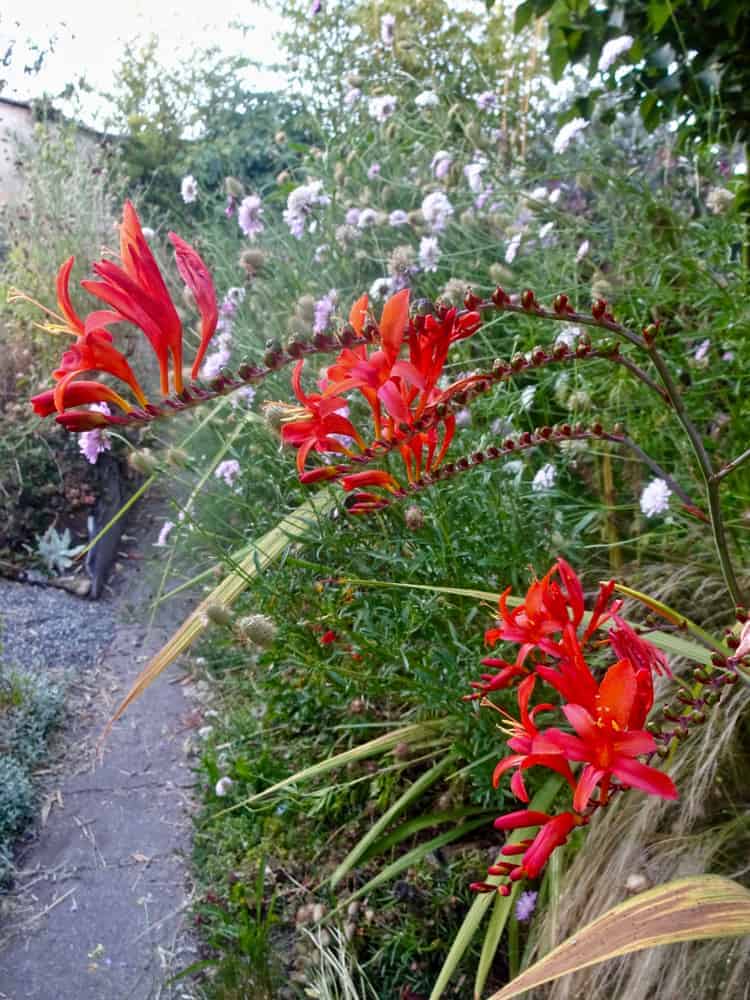
This attractive plant has sword-shaped, 12 inches foot high (30.5 cm) light-green foliage. On the top of 12 to 18 inches tall (30.5 – 46 cm) stem, you will get a cluster with up to eight funnel-shaped flowers.
Unfortunately, there are no exciting ancient myths about this amazing flower since it is actually newly discovered. Originated in South Africa, it became widely popular in the 1970s. It was named after a German physician Friedrich Heinrich Theodor Freese.
There are sixteen recognized species of this flower and impressive 1,800 types growing all over the world. When you put them into a vase, you will have an excellent decoration for your home at least a week. Since the 1950s, many brides have been using this beloved flower for unique wedding bouquets.
Also, if you want to show someone that she is special for you, and how much you appreciate her as a best friend, give her Freesia. It is a universal symbol of friendship and innocence but also symbolizes the seventh wedding anniversary.
There is a company in Holland, which has been breeding this flower for almost fifty years. Thanks to their work, we have disease-resistant varieties nowadays. Plus, they produce Freesia with double flowers and even bi-color ones.
Freesia Species |
|
|
Species |
Region |
| Freesia corymbosa |
The Cape Provinces |
|
Freesia andersoniae |
The Cape Provinces |
| Freesia fergusoniae |
The Cape Provinces |
|
Freesia marginata |
The Cape Provinces |
| Freesia speciosa |
The Cape Provinces |
|
Freesia praecox |
The Cape Provinces |
| Freesia verrucosa |
The Cape Provinces |
|
Freesia occidentalis |
The Cape Provinces |
|
Freesia leichtlinii |
The Cape Provinces (naturalized in California, Argentina, Corsica, and Florida) |
|
Freesia refracta |
The Cape Provinces (naturalized in Bermuda, France, Canary Islands, St. Helena, and Madeira) |
|
Freesia sparrmanii |
Langeberg in the Cape Provinces |
|
Freesia fucata |
The Cape Provinces, Hoeks River Valley |
| Freesia caryophyllacea |
The Cape Provinces, Heuningrug region |
|
Freesia viridis |
The Cape Provinces and Namibia |
|
Freesia grandiflora |
Zimbabwe, Zaire, Malawi, Tanzania, Swaziland, Mozambique, South Africa, and Zambia |
|
Freesia laxa |
Kenya and Rwanda (naturalized in Florida, Madeira, Australia, Mauritius, and Argentina) |
How to Grow Freesia Flowers in Your Garden
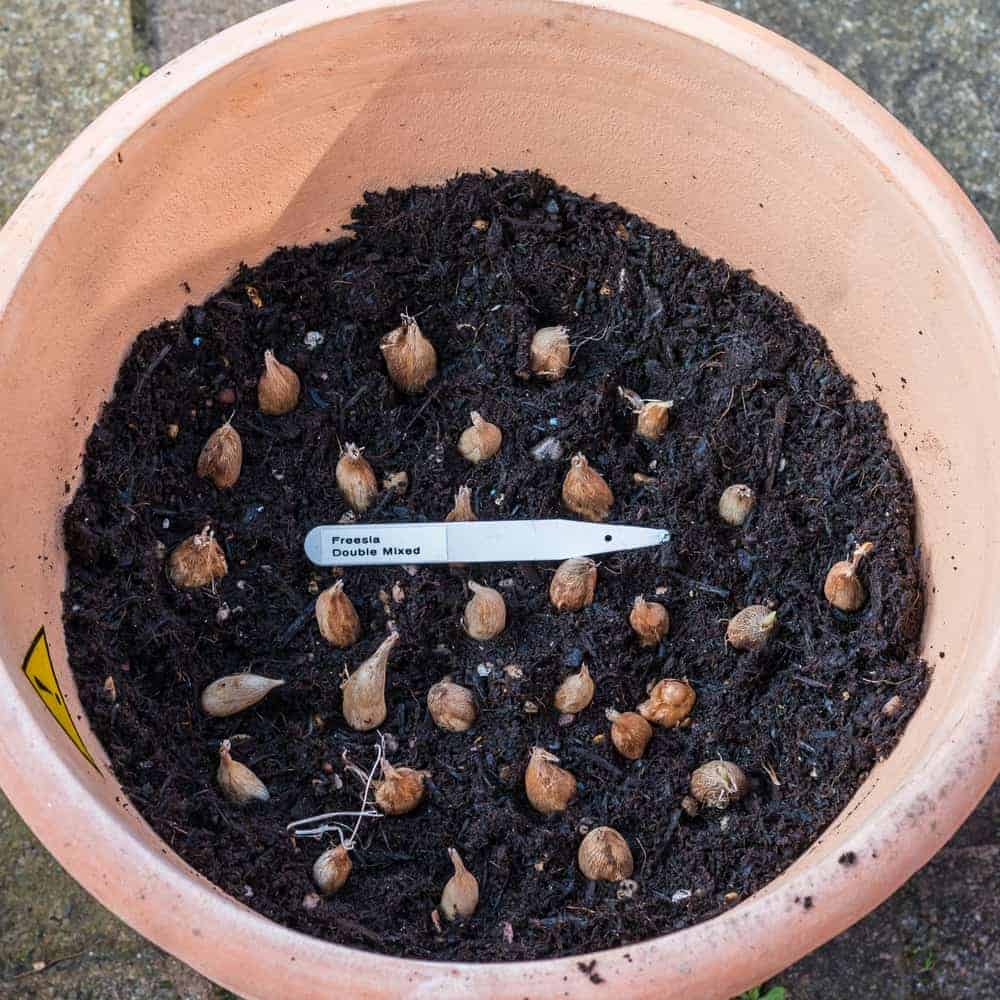
Growing outdoors
The best moment for planting is in spring after the last frost. In the warmer regions, you can start planting in autumn.
Freesia grows from a corm (bulb) after preparatory treatment in a tropical-like environment, which usually lasts three months. Plant the separated, dried, and cured corm 2 inches (5 cm) deep into the ground.
To avoid overcrowding, you should leave approximately 3 inches (7.6 cm) between two plants. Take care to set up pointed tips of corms upward.
If you do this on time when the temperatures are adequate and the quality of the soil fits, you can expect the first roots grow in a couple of weeks. The first flowers will appear three to four months after planting.
Growing in containers
It is an excellent idea to grow Freesia in a container. Firstly, you should prepare a growing medium. The best one is made of gardening soil, peat moss, and acid compost in equal quantities. I have got great results with the application of milled acid bark instead of compost, and I recommend it for use if you can get some.
Take care to purchase or make containers with adequate drainage. One of the biggest problems with growing Freesia is rotting corms when the soil is waterlogged.
Place the container at the proper place with enough morning sun and partial shade in afternoons. The best variation is planting six corms in a 4 to 6 inches (10 – 15 cm) deep container. Place them about 2 inches (5 cm) apart and, if watering regularly, you will get abundant flourishing.
Move the container in full sun when corms begin to sprout. Once you see buds, you can decide if you want your Freesia in the garden, or you prefer keeping it indoors.
Overwintering Freesia
Saving your flower during winter is crucial. As soon as the foliage turns yellow, it is pruning time. That means that you need to remove all yellow and wilted leaves.
The moment when two-thirds of Freesias die back, you should move them to a cold, dark place to enter dormancy. Reduce watering as much as possible to prevent premature blooming of the corms.
It’s up to you when you will break off the period of your plants’ dormancy. If you do it in autumn, your plant will flourish at the beginning of spring. Otherwise, interrupting this period in winter means that you will enjoy blooming of your Freesia in summer.
There is one more possibility. When your plant becomes old after a couple of years, you should dig up its corms and separate them into pieces. You can expect to find one large, firm corm, a few smaller ones on the side, and older, unhealthy corn at the bottom.
Throw away this old parent corm remained since last year. On the other hand, separate small ‘baby’ corns, let them dry and cure for a couple of weeks, and replant them in your garden.
How to Care Freesia in Your Garden
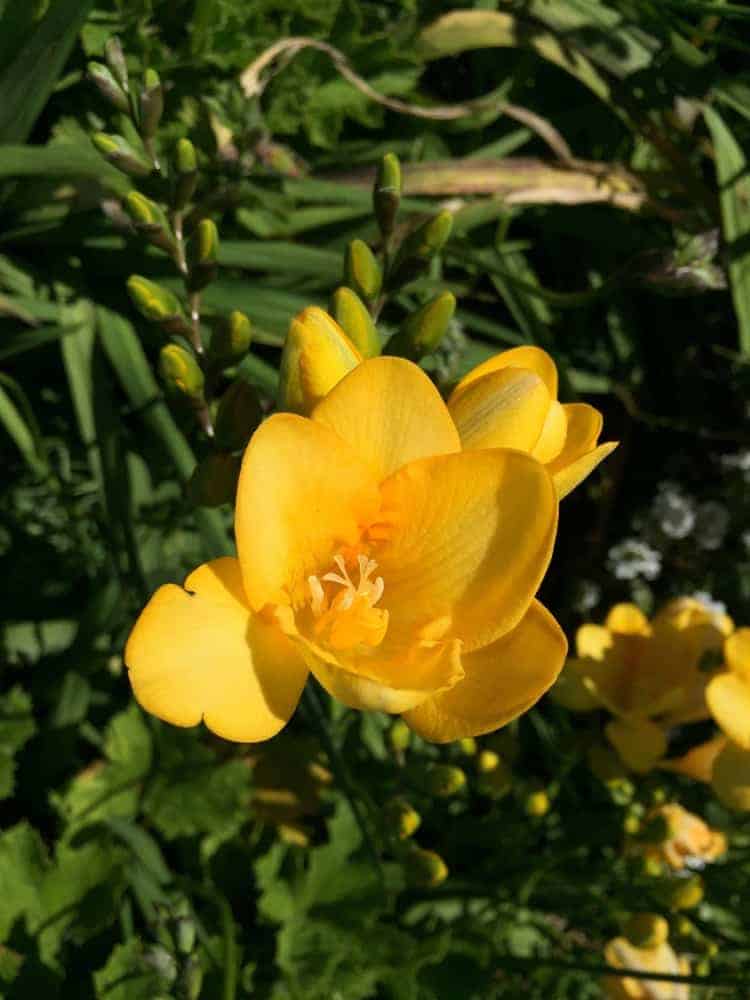
Space
When you decide to plant a few Freesias in your garden, you should space them properly. The best way is to plant corms 2 to 3 inches (5 – 7.6 cm) apart. Enough space will allow adequate airflow and help in preventing fungal diseases.
If you have a plan to plant your flowers in a pot, you should pick the right one depending on the number of corms available. For example:
- Three plants require the pot 4 to 5 inches (10 – 13 cm) in diameter
- Five plants require the pot 6 inches (15 cm) in diameter
- Seven to nine plants require the pot 8 inches (20 cm) in diameter
Soil
Your lovely plant requires heavy, well-drained, loam-based soil, but you can grow it in clay or chalky ground as well. If you need to improve drainage, you should amend the soil.
Add compost, peat moss, decomposed manure, or ground bark to raise the level of the bed for at least 4 inches (10 cm).
The other essential thing is to find a way to cool the soil appropriately since Freesia requires controlled temperatures to thrive.
Light
Your Freesia will require full sun, but it can tolerate partial sun and even light shade.
Temperatures
Firstly, you need to keep the corms dry and at the warm place during the period of dormancy. However, they need the temperatures of 50 to 55 F (10 – 13 C) during the nights and damp conditions to form buds at the beginning of the growth period.
That practically means that you should move a pot with your Freesia into an unheated garage every night to get a plant with abundant flourishing eventually.
Watering
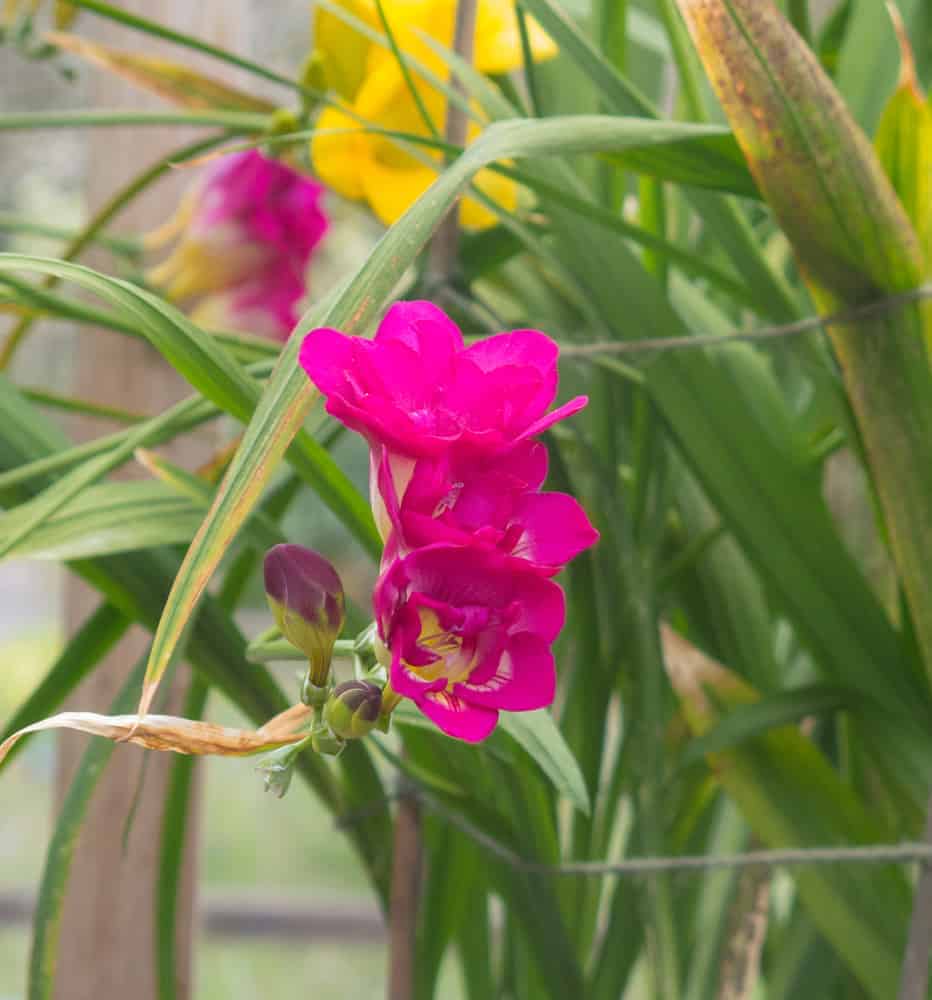
Your Freesia needs regular watering throughout the growing season, but you should avoid leaving your plant in too soggy ground. It will be enough watering it with 1 inch (2.5 cm) of water once a week.
On average, this flower will bloom after four months. From that moment, it will need consistent watering, best early in the morning, until its blooms start fading. When your flower becomes dormant, you can stop watering it so often.
Take care not to spray the leaves. Otherwise, they will become ‘as cooked’ during the hot summer days.
Fertilizing
Freesia needs a balanced, potash-rich fertilizer twice a month throughout the whole growing season. You should begin feeding your plant as soon as the corms start sprouting, and finish with fertilizing when your flower becomes dormant.
Supporting
Since Freesia has pretty thin stems, you should support it. It is especially important at a time of full bloom when the plant is 6 to 8 inches (15 – 20 cm) tall, and flower heads are heavy. It is not complicated installing an excellent staking system to keep the plants upright.
When you grow your plant in a pot, special round supports will be an ideal solution for this purpose. When you decide to plant a bunch of Freesias, the best way to support them is a plastic mesh sets up approximately 1 to 2 feet (30.5 – 61 cm) above the ground.
Pruning
You don’t need to prune your Freesia at all, but this action will probably encourage blooming. On the other hand, it is recommended to deadhead wilting flowers and cut yellow leaves regularly.
Once the blooms die, you should let the foliage grow for a while. It is crucial for providing energy, which will help your flower to become stronger the following season.
If you live in the North State, cut the foliage and stems after the first frost. Do it approximately 1 inch (2.5 cm) above the ground. If you live in the South State, your Freesia will never entirely turn yellow and die, and this step is unnecessary.
Freesia Flowers Pests and Diseases
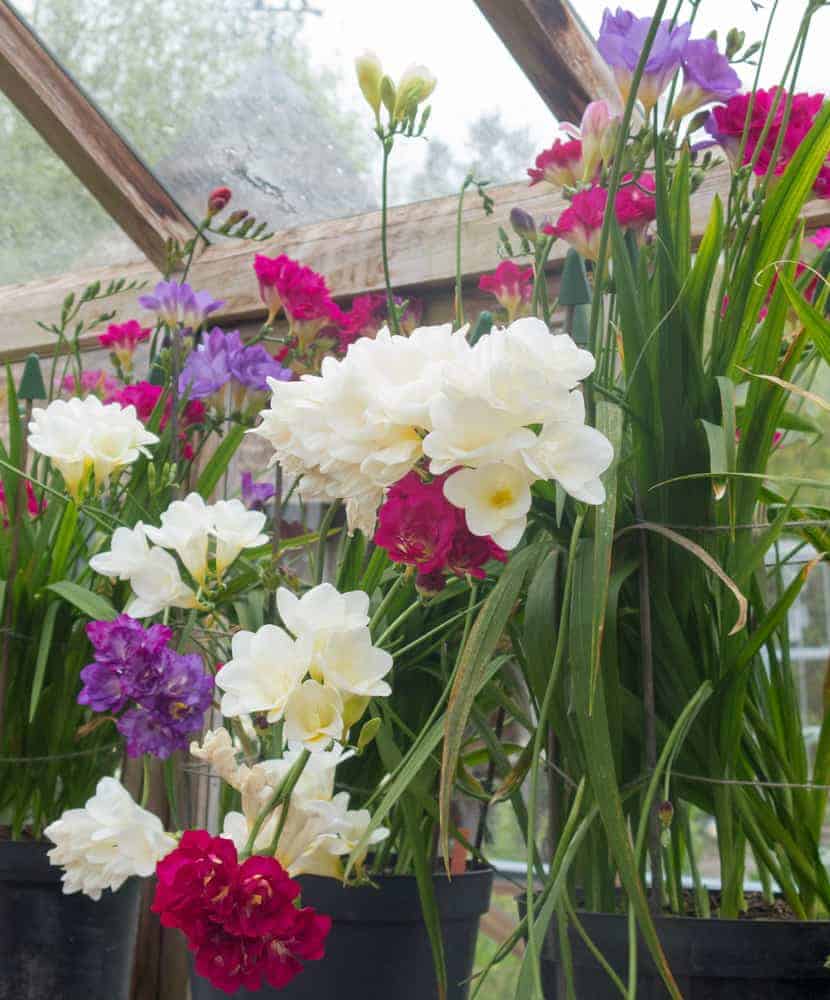
Heat damage
When the temperatures are higher than 60 F (15.5 C), your plant will grow spindly, and its flowers will fade very quickly. Also, drastic variation in temperature may cause deformation of blooms and the occurrence of ‘wheat-ear,’ a vertical flower head instead of angled one.
Frost damage
Severe frost will cause the appearance of grey and translucent foliage, as well as stems’ softening and deterioration of flowers.
Aphids
These insects can damage your Freesia severely. They feed on leaves and blooms, leaving them yellow and full of holes. Wash off the bugs from your plant with a strong jet of water or use some spray to get rid of them.
Bacterial soft rot
This bacterial infection starts with spots on the flowers, the foliage, and stems of your Freesia. Over time, all the parts of your plant will become gray and black.
You can’t cure your flower once the disease occurs, but you can prevent it by reducing the moisture of the soil.
Iris leaf spot
The result of this fungus disease is yellow water-soaked lesions on the bloomed plant. You can keep the infection under control by improving drainage and cutting affected and wilted leaves.
Fusarium wilt
This frustrating fungal infection is entirely incurable. Once it occurs, the only thing you can do is to destroy the whole plant. To prevent it, keep the ground around your plant moderate moist by improving the drainage.
Slugs and snails
You can expect these mollusks to come into your garden during the night. They chew the foliage and flowers and may cause the death of your plant. Move them by handpicking.
There is also the possibility of using beer traps, diatomaceous earth, or a bucket with the soap solution to destroy them.
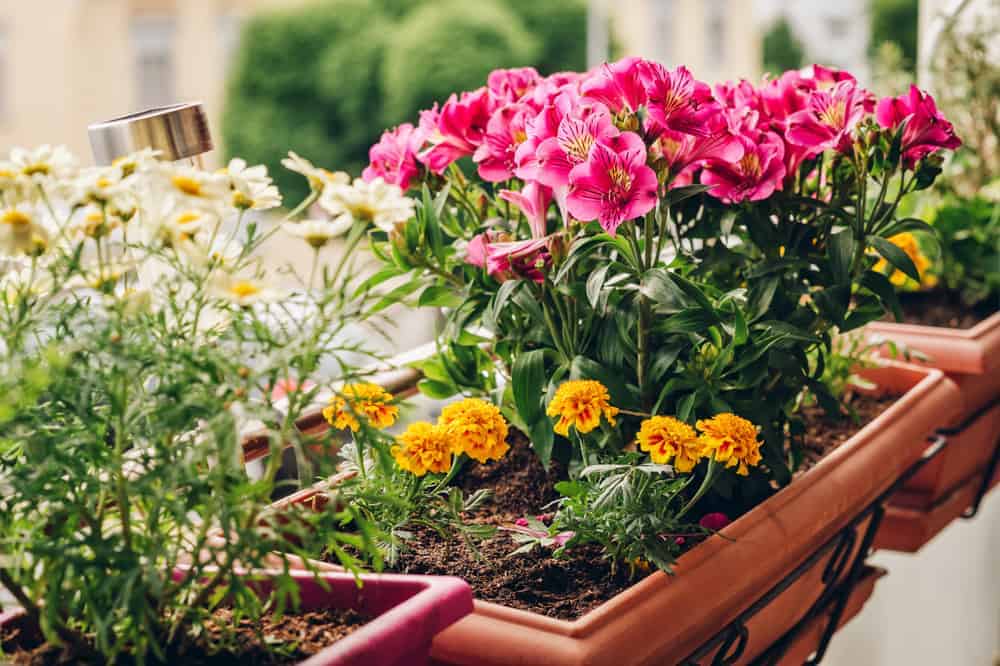
Great difficulty undersanding the video that starts this page. I was surprised because other videos you are easily understood. I love the photos of the donkeys.